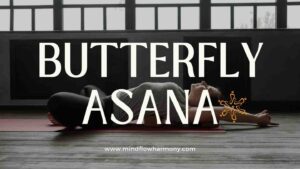Bird of Paradise yoga pose manifests as a brilliant demonstration of power while showing both equilibrium and elegance. This posture draws us to deeply plant ourselves on the ground while extending our bodies toward the heavens. We will now explore the core essence of this empowering pose.
What is Bird of Paradise Pose in Yoga?

The position named Bird of Paradise Pose in yoga appears in various traditional Hatha Yoga assemblages.
Svarga Dvijasana the Sanskrit name for bird of paradise pose means “the bird risen to paradise.” Throughout history, this body position brought forward multiple spiritual meanings including liberation and the spiritual path, and the growth of internal consciousness. The Hatha Yoga tradition established this pose which follows the yogic path to rise above earthly boundaries and expand toward divine meditation.
You may also be wondering, what is the bird of paradise yoga pose for. Well, the bird of paradise yoga pose connects your energy with the earth below while enabling your spirit to find freedom through the elevation of lightness. This posture enhances physical balance as well as flexibility and develops muscular strength. Through spiritual practice, this pose teaches awareness of patience alongside focus combined with the aesthetic value of slow development.
How to Get Into Bird of Paradise Yoga Pose (Step-by-Step Guide)
The steps of how to get into bird of paradise yoga pose remain a mystery to many yoga students. This gentle guide leads you by listening to your body as you expand like a flower toward sunlight. Your practice of the bird of paradise yoga pose should start from present awareness regardless of your skill level. The following guide will help you understand each step of performing the Yoga Pose Bird of Paradise.
Step 1: Start in Bound Side Angle Pose:
You should either place your hand against your thigh or inside your front foot as you lower your front elbow. Reach your lower arm under your front thigh while extending your hand towards your back. The top arm must sweep backward to create either hand clasp or strap usage.
Step 2: Bind the Arms Behind the Leg
A deep gaze combined with steady breathing will help you deepen your bond. Your heart will elevate while your strength remains stable during this deep inhalation. Direct your breath toward the open area of space you have built.
Step 3: Rise Up to Balance on One Foot
Grip your back foot steady and then move the bound leg forward with caution. Stand up while maintaining your balance on your standing foot. As your elevation starts your roots will maintain their hold on you.
Step 4: Extend the Leg
You can extend the bound leg forward after finding stability. The bound leg should open up just as a bird of paradise flower would with its petals in full bloom. The light of your heart should face forward and your breathing should remain calm and steady.
Tip: Any haste during binding can result in injuries to the body. If needed slightly bend the lifted leg. A bird of paradise reveals its most beautiful essence through its realness rather than through any form of perfectness.
Bird of Paradise Yoga Pose Benefits for Body and Mind

The bird of paradise yoga pose delivers numerous advantages that reach further than your physical health. Each time we perform Bird of Paradise pose yoga we develop a unified state of body together with mind and spirit.
Improves Balance and Stability
Your ability to remain balanced on one foot develops your internal steadiness which helps your body maintain alignment and relaxation of your nervous system.
Deepens Hip and Hamstring Flexibility
A deep binding leg extension stretches both the hips and hamstrings which results in smooth movement while decreasing muscle tension.
Enhances Focus and Breath Awareness
The exact execution required for this pose guides your mind toward internal reflection as you match your breath with the movement which serves both yoga practice and daily life. This is yet another one of the great bird of paradise yoga pose benefits.
Strengthens Core and Leg Muscles
The maintenance of the bird of paradise demands whole-body activation starting from the legs and extending through the core which produces solid internal and external stability systems.
Modifications and Variations for All Levels
Every level of yoga experience finds its appropriate version of bird of paradise poses at the bird of paradise practice. The ability to adapt shows true knowledge rather than making sacrifices.
Beginner-Friendly Modification with Strap
A strap can substitute the hand binding when you need it. The practice remains safe and your heart stays open through this technique as you advance through your practice.
Wall-Assisted Bird of Paradise
The wall can function as a balance support when you lift and extend your leg during practice. The wall serves as a reassuring guide that allows you to use it when you need it during your ascent.
Advanced Variation with Extended Arm Balance
More advanced practitioners should attempt to reach their upper limbs toward the ceiling as they elevate their raised legs toward maximum height. This pose generates a magnificent energetic pathway that connects the earth to divine heights which represents a flying bird of paradise.
Precautions and Contraindications of Bird of Paradise Yoga Pose

The yoga poses bird of paradise shows remarkable beauty yet requires sensitivity toward your body during practice. The practice requires inner listening as a form of devotion.
Who should avoid this pose?
People with current shoulder injuries along with severe restrictions in their knees or hips or hamstrings should not perform the complete Bird of Paradise pose yoga. The pose should be avoided by expectant mothers along with individuals who struggle with balance issues and those who suffer from any of these medical conditions.
Injuries to be mindful of:
- A hamstring injury will result in unsafe or painful extension because of hamstring tightness or strain. Honor your edge.
- The standing knee needs to stay unlocked while the leg being lifted should be taken through a full range of motion that does not damage its joints. Stability matters more than depth.
- The required shoulder flexibility for this posture is high. The act of forcing the bind through the stretch may cause tissue strains or impingement injuries.
Importance of warming up:
Before performing the yoga bird of paradise pose, always start with movements that open the hips dynamically and stretch the hamstrings together with gentle shoulder joint release exercises. The process of warming up protects against injuries while simultaneously attracting your body to open the way flowers welcome sunlight in the morning.
Tips to Master the Bird of Paradise Pose

An embodiment of this bright yoga position brings the same transformative value as the final stage of the pose. Your progress will benefit from trusting the process while implementing these suggestions.
Use props for support:
The utilization of straps and walls together with blocks functions as essential tools that never demonstrate weakness. The yoga bird of paradise pose can help you reach proper alignment through their wise guidance as they bridge your gaps with compassion.
Work on preparatory poses:
Your yoga practice should focus on intensifying poses including Bound Side Angle (Baddha Parsvakonasana) Forward Fold (Uttanasana) and Shoulder Openers. Bird of Paradise requires these poses to develop its natural blooming potential through the established space and gain strength.
Focus on breath and patience:
The wind (breath) functions as the flowing current which supports your experience throughout intense moments. Your breathing pattern should involve opening your body during inhalation while finding stability through exhalation. Your body will naturally unfold at the right time just as nature does when you exercise patience.
FAQs – Bird of Paradise Yoga Pose
How to get into bird of paradise yoga pose?
From the Bound Side Angle position start by holding hands then stepping forward with the bound leg followed by rising to stand before gently extending the leg according to your balance level.
How to do bird of paradise yoga pose?
Do this while breathing steadily and activate your core strength and heart lift while extending your leg with mindfulness to maintain strength in the standing leg.
Does bird of paradise yoga pose offer benefits to practitioners?
The pose teaches body balance and flexibility and develops strength while enhancing focused breathing and represents spiritual elevation and new life potential.
Which level of practitioners should attempt the bird of paradise pose?
People new to yoga should start with modified variations with a strap or wall support until they achieve basic flexibility and equilibrium for full performance.
Which specific muscles does the muscle activation pattern in Bird of Paradise yoga practice include?
This yoga posture activates the strength of the hamstrings hip flexors and glutes together with the core, shoulders, and quadriceps thereby creating a complete body activation.
Final Thoughts – Embrace the Challenge and Growth
The yoga pose that resembles a bird of paradise serves as much more than a static posture.
The practice shows us that we need grounding as well as extending our reach because powerful beauty emerges from combining strength with gentleness while requiring patient nurturing.
Performing this pose in any variation allows you to respect your process of personal growth. By practicing with an open heart and deep breath alongside steady practice you will achieve your own state of paradise.








